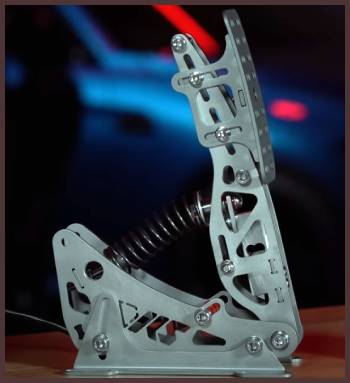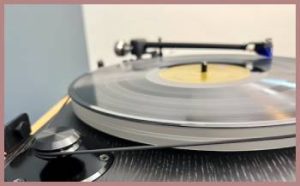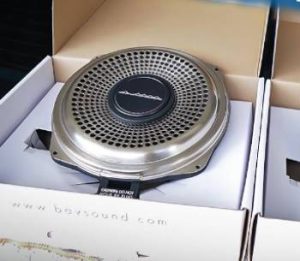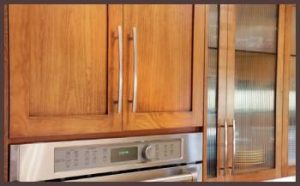When it comes to sim racing pedals, two names inevitably dominate the conversation: Virtual Racing School (VRS) Pedals and Heusinkveld. And for good reason. These are two of the leading manufacturers in the sim racing industry, providing gamers and professionals with unrivaled realism and performance.
But how do these two giants compare? Let’s dive in.
A Brief Comparison Table
| Feature | VRS Pedals | Heusinkveld |
| Construction | High-quality materials, solid and robust | High-quality materials, solid and robust |
| Hydraulic Action | Yes (brake pedal) | Depends on the model |
| Size | Smaller, compact design | Larger, more immersive design |
| Weight | Lighter | Heavier |
| Customizability | Limited | High (adjustable pedal force, travel, and pedal faces) |
| Price | More affordable | More expensive, premium pricing |
| Suitability for Beginners | Yes, less complex | Yes, but more complex due to customizability options |
| Country of Origin | Not specified | The Netherlands |
VRS Pedals: Aiming for the Pinnacle
VRS Pedals have quickly carved out a unique niche in the sim racing market. Built with an obsession for perfection, they are renowned for their exceptional performance and durability. Their size, while smaller than Heusinkveld’s, is ample enough for comfortable, immersive gameplay.
Pros of VRS Pedals

- Precision Crafted
Each set of VRS pedals is precision-engineered. They use high-quality materials, ensuring a solid, robust construction that provides a gratifying level of feedback. Plus, their durability is top-notch; these pedals are built to last.
- Hydraulic Action
A highlight of VRS pedals is their hydraulic action. The hydraulic brake pedal gives a realistic feel that’s hard to match, mimicking the pressure and resistance of an actual car brake. This feature significantly enhances the immersion and overall gaming experience.
Cons of VRS Pedals
- Smaller Size
One of the potential downsides of VRS pedals is their smaller size. While this doesn’t affect their performance, it could detract from the overall immersion for those with larger foot sizes or those who prefer a larger pedal surface.
- Weight
VRS pedals are relatively lightweight, which might not be to everyone’s taste. Some sim racers prefer a heftier pedal for stability and a more grounded feel.
Read More: About DIfferences Between Onewheel And Electric Bike
Heusinkveld: The Dutch Masterpiece

Heusinkveld pedals are the brainchild of Dutch engineering and are often hailed as the ‘Rolls Royce’ of sim racing pedals. They are larger and heavier than the VRS pedals, which adds to their realism.
Pros of Heusinkveld Pedals
- Size and Heft
Heusinkveld pedals are larger and heavier than their VRS counterparts. This size and weight lend a more realistic feel to the pedals, enhancing the overall racing experience.
- Customizability
Heusinkveld pedals offer a high degree of customizability. You can adjust the pedal force, travel, and even the pedal faces to suit your preferences, making them a versatile choice for sim racers.
Cons of Heusinkveld Pedals
- Price Tag
While the Heusinkveld pedals offer a premium experience, they also come with a premium price tag. This cost might be prohibitive for sim racers on a tighter budget.
- Complexity
With great customizability comes complexity. Adjusting the Heusinkveld pedals to your preferences could be a bit challenging for beginners or those less technically inclined.
Frequently Asked Questions (FAQs)
Heusinkveld pedals are made in the Netherlands, renowned for its high-quality engineering.
The specific size of VRS pedals can vary depending on the model, but generally, they’re smaller than Heusinkveld pedals. They are designed to be compact yet comfortable.
Yes, VRS pedals use hydraulic action for the brake pedal, providing a realistic feel that closely mimics an actual car brake.
The height of VRS pedals is not explicitly stated by the manufacturer. However, they are designed to fit comfortably within standard sim racing setups and are adjustable to accommodate different foot sizes and seating positions.
Heusinkveld pedals are generally larger in size compared to VRS pedals. This size contributes to the overall realism and immersive feel of the Heusinkveld racing experience.
A ‘boss pedal’ isn’t directly related to either VRS or Heusinkveld pedals. ‘Boss’ is a brand known for their music equipment, including guitar effect pedals. The weight of these pedals varies widely depending on the model, but they’re generally lightweight, often around a pound or less.
Read More: About Comparison Between EverLights And TrimLight
Conclusion
In the end, choosing between VRS Pedals and Heusinkveld comes down to personal preference and budget. Both offer fantastic performance, durability, and realism, making them top choices for any sim racer. If you prefer a compact, hydraulic pedal set, VRS could be your ideal choice. On the other hand, if size, weight, and customization are important to you and you don’t mind a higher price tag, Heusinkveld could be your best bet.
Remember, the best pedal set is the one that meets your specific needs and enhances your sim racing experience. Whether that’s VRS Pedals or Heusinkveld, you’re in for a treat with either of these titans of the sim racing world.



